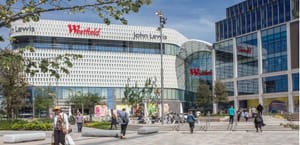Shopping centres have long been temples of consumption, designed to maximise dwell time and basket size. Yet across Europe's major retail destinations, change is underway. Between the fashion outlets and food courts, a new category of tenant is moving in: healthcare providers.
Historically, point of care has been delivered in dedicated medical settings such as standalone clinics and high-street practices that stood apart from retail environments. Now, as retail landlords seek new tenants and healthcare providers prioritise accessibility, the mall is emerging as an unlikely yet strategic setting for this convergence.
🔍 Do you need deeper insights into life sciences real estate?
In addition to our regular updates, we offer bespoke research and strategic analysis for investors and developers in the life sciences sector. Whether you’re evaluating an acquisition, tracking market trends, or need a custom report, our team can help you make informed decisions.
Get in touch to discuss how we can support your next project.
UK examples
Westfield London (see photo above) has been explicit about its intentions. The mall has launched a dedicated Health & Wellness Village, allocating over 50,000 square feet for health and wellness brands and services. This is not ad hoc leasing but a planned initiative driven by research showing that most UK adults are open to accessing non-emergency healthcare in shopping centres, particularly younger generations seeking convenient services.
Research commissioned by Unibail-Rodamco-Westfield (URW) found that 70 per cent of UK adults are open to accessing non-emergency healthcare in non-traditional settings such as shopping centres. The UK’s private healthcare market, valued at over £11 billion, underpins this growing demand for accessible, retail-based care options.







